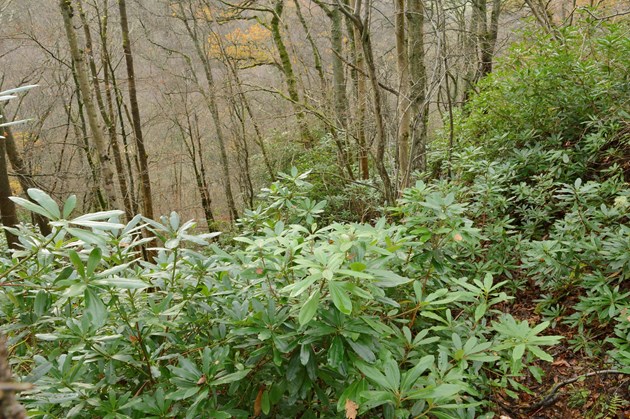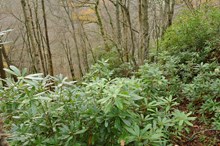22 June, 2022
New approaches for NatureScot to improve designated sites

NatureScot will be developing new approaches to ensure that protected areas help nature thrive across Scotland.
Official statistics published today by NatureScot show that more than three quarters (77.9%) of Scotland’s natural features on protected nature sites are either in or recovering towards a favourable condition. Natural features include habitats, species as well as geological features such as fossil beds and caves. Cooperative work with landowners on protected areas has been key to improving the condition of sites.
However, there has been a slow decline in the number of features in favourable condition over recent years. This analysis, and NatureScot’s Protected Area Review, highlight that in many cases it’s necessary to look beyond the boundaries of individual sites to understand changes and, where possible, develop solutions.
In many cases, unfavourable condition is the result of factors external to an individual site that cannot be influenced, such as geographical shifts in the areas which some species breed or spend the winter. However, other declines are due to issues that can be improved, but operate at larger geographical scales and therefore require new approaches.
For example, two of the biggest causes of unfavourable condition are overgrazing, and invasive, non-native species. Controlling invasive species, such as rhododendron or Japanese knotweed, requires collaboration between neighbouring owners to be effective as leaving even a small patch of an invasive plant allows rapid recolonization of cleared areas. Similarly, reducing grazing pressures by deer or other species requires collaboration and partnership from neighbours. These approaches can help not only nature within protected areas but also outside it.
Biodiversity Minister Lorna Slater said:
“The Scottish Government is committed to tackling the twin crises of climate change and nature loss. Already over 17% of Scotland is protected specifically for nature, and 37% of our seas now form part of the Scottish Marine Protected Area network.
“But we know we can and must do more. Sadly the evidence tells us that Scotland, in common with the rest of the UK and the world, has not done enough over the two past decades to prevent the continuing decline in biodiversity.
“That is why we have recently established the £65 million Nature Restoration Fund, committed to expanding our areas managed for nature and our National Park network. Earlier this week we published a consultation on our ambitious new biodiversity strategy, which sets out our ambition to halt nature loss by 2030, and reverse it by 2045.
“Evidence tells us that non-native species are one of the top five drivers of global biodiversity loss - threatening the survival of native wildlife and damaging our natural ecosystems. The Scottish Government is funding the Scottish Invasive Species Initiative, which is tackling invasive non-native plant and animal species alongside rivers and water courses in northern Scotland - covering over one third of Scotland’s total area.”
Nick Halfhide, NatureScot’s Director of Nature and Climate Change, said:
“Scotland is facing a nature emergency and protected areas have a vital role to play in strengthening Scotland’s ecological networks and helping us build resilience in the face of the climate change and biodiversity loss crises.
“Protected areas are often small and isolated from other natural areas. So although it’s possible to improve some species and habitats with work on one site, we also have to look at the situation more widely. This isn’t something we can do on our own; we all need to play our part to protect Scotland’s nature and to champion the work of land-managers who are delivering for nature on these sites. We’re committed to protect, restore and value these special areas through collaboration, respect and evidence-based work with partners.”
NatureScot will be working with partners on a range of projects that will support these efforts. This includes the 30x30 challenge, to conserve at least 30% of Scotland’s land and Sea by 2030, and the Nature Networks project to improve connectivity between habitats. These projects will be launched later this month and offer the opportunity to improve the effectiveness of these important areas.
This is in addition to the Scottish Government’s new Scottish Biodiversity Strategy, which aims to deliver transformational change to protect and restore terrestrial, freshwater and marine biodiversity in Scotland; the Scottish Government’s £65 million Nature Restoration Fund (NRF), which funds projects that restore wildlife and habitats; the new Scottish Marine Environmental Enhancement Fund (SMEEF), recently launched to transform the health of Scotland’s coasts and seas; and ongoing work with the Alliance for Scotland’s Rainforest partnership, working to protect and restore this globally significant habitat.
See the full statistical publication here.
See the full Protected Areas review here.
ENDS
Contact information
- Name
- NatureScot Media
- Telephone
- 0131 316 2655
- media@nature.scot
Notes to editors
Notes to editors
The report draws on annual monitoring carried out by NatureScot of the condition of the 5,590 natural features across Scotland. As of 31st March 2022, 5,301 natural features were assessed, divided into three categories: habitats (77.6% in favourable condition), species (72.3% in favourable condition) and earth sciences, which includes geographical outcrops and landforms, fossil beds, and caves (96.8% in favourable condition).
NatureScot’s Site Condition Monitoring (SCM) programme began in 1999 to examine the condition and status of over 1,800 protected areas and their 5,590 natural features on protected natural sites in Scotland. All features are considered to be important at the national (Sites of Special Scientific Interest), European (Special Area of Conservation and Special Protection Area) and international (Ramsar) levels. Research is carried out by NatureScot staff and specialist contractors.
NatureScot is Scotland's nature agency. We work to enhance our natural environment in Scotland and inspire everyone to care more about it. Our priority is a nature-rich future for Scotland and an effective response to the climate emergency. For more information, visit our website at www.nature.scot or follow us on X at https://x.com/NatureScot
’S e NatureScot buidheann nàdair na h-Alba. Bidh sinn a’ neartachadh àrainneachd na h-Alba agus a’ brosnachadh dhaoine gu barrachd suim a chur ann an nàdar. Tha e mar phrìomhachas againn gum bi nàdar na h-Alba beairteach agus gun dèilig sinn gu h-èifeachdach le èiginn na gnàth-shìde. Tha an tuilleadh fiosrachaidh aig www.nature.scot no air X aig https://x.com/NatureScot

